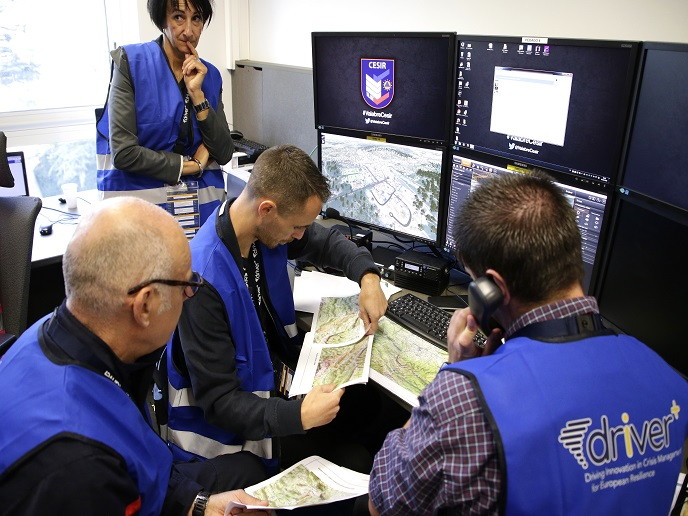Enhancing European resilience and response to threats and crisis situations
The EU is exposed to an array of potential crises and disasters, such as those associated with climate change or caused by terrorist attacks or failures in critical infrastructure. Effective crisis management hinges on, amongst other factors, developing new socio-technological solutions, and enhancing cooperation amongst citizens, organisations and authorities. The EU-funded DRIVER+ project has been established to enhance European resilience in the face of crisis situations. The initiative is bringing together practitioners, relief agencies, policymakers, technology suppliers and researchers from across Europe. These crisis management professionals are jointly developing innovative solutions that will aid emergency services in managing major crises more effectively. The required capabilities and identified gaps are the drivers for innovation and developing new solutions. “Solutions may include a new piece of software or a training approach, a new item of equipment or a new way of working together. However, practitioners need to know that any new solution has been tried and tested and proven to be valuable in a realistic and challenging environment,” notes Marijn Rijken (TNO), project director of DRIVER+.
Sustainable innovation solutions
The consortium is organising simulation trials in four European cities to improve their region’s crisis management capabilities in case disastrous events such as earthquakes, floods, forest fires or massive release of chemical agents ever occur. “Although there are many innovative management solutions practitioners could come up with, they have to assess each one objectively and test how the solution works together with operational systems already in use,” states Marcel van Berlo, technical coordinator of DRIVER+. “To this end, DRIVER+ has developed a robust and practitioner-driven test-bed which is used to systematically assess crisis management solutions.” One important part of this test-bed is the ‘Trial Guidance Methodology’, describing how to prepare and evaluate trials. DRIVER+ has also developed the test-bed infrastructure – a toolbox with software components that helps setting up and managing a trial. In this virtual space, practitioners, researchers, policymakers and citizens can work jointly and evaluate new tools, processes and organisational solutions. In addition, a web-based ‘Portfolio of Solutions’ is being developed to further strengthen the crisis management capabilities in Europe. This online catalogue is open for all solution providers and lets experts find everything they need to know about a solution, including experiences from practitioners.
Key activities
The two key dimensions of DRIVER+ – the test-bed and the Portfolio of Solutions – are complemented by a third one: sharing a common understanding of crisis management across Europe. For that reason, the Crisis Management Innovation Network Europe (CMINE) community of practice has been established, open for every interested stakeholder. CMINE links several networks and projects and facilitates the exchange of good practices and new ideas, fostering innovation in crisis management. Annual ‘I4CM - Innovation for Crisis Management’ events, policy research roundtables and several CEN Workshop Agreements further contribute to building a shared understanding in crisis management across Europe. In February 2020, a final conference will be organised in Brussels to communicate project results. Project partners have also developed a framework to assess the societal impact of crisis management solutions. For example, it will help you assess under which circumstances it is acceptable to use a drone that provides a live camera view over flooded areas. Preventing negative and promoting positive societal impact is part of assessing the potential value of crisis management solutions.
Keywords
DRIVER+, crisis management, trial, portfolio of solutions, CMINE, capability development, citizens, resilience, test-bed, disaster, emergency services







